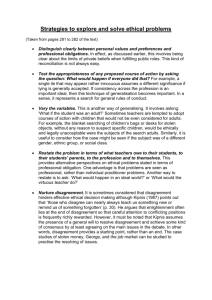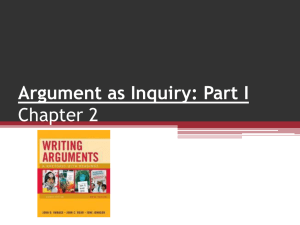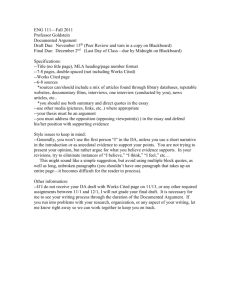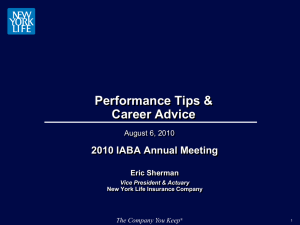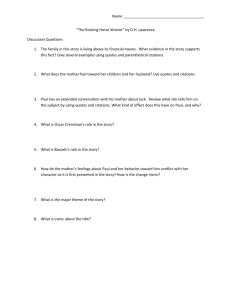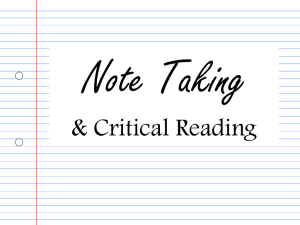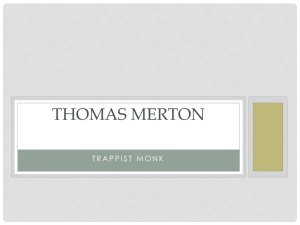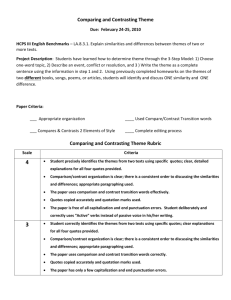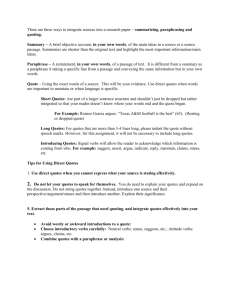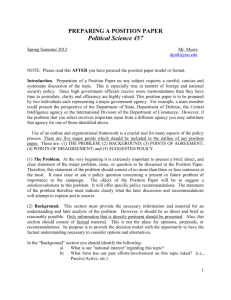Response-Papers-and-Other-Writing-Exercises-Close-Analysis
advertisement
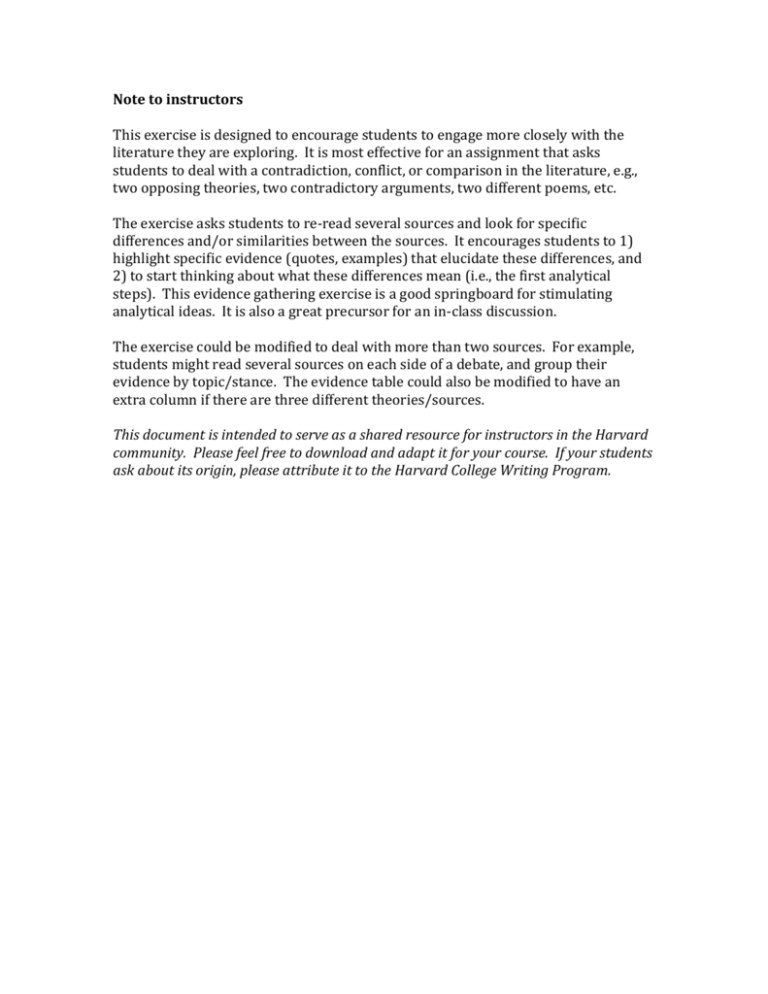
Note to instructors This exercise is designed to encourage students to engage more closely with the literature they are exploring. It is most effective for an assignment that asks students to deal with a contradiction, conflict, or comparison in the literature, e.g., two opposing theories, two contradictory arguments, two different poems, etc. The exercise asks students to re-read several sources and look for specific differences and/or similarities between the sources. It encourages students to 1) highlight specific evidence (quotes, examples) that elucidate these differences, and 2) to start thinking about what these differences mean (i.e., the first analytical steps). This evidence gathering exercise is a good springboard for stimulating analytical ideas. It is also a great precursor for an in-class discussion. The exercise could be modified to deal with more than two sources. For example, students might read several sources on each side of a debate, and group their evidence by topic/stance. The evidence table could also be modified to have an extra column if there are three different theories/sources. This document is intended to serve as a shared resource for instructors in the Harvard community. Please feel free to download and adapt it for your course. If your students ask about its origin, please attribute it to the Harvard College Writing Program. Handout for students Close analysis of the literature This exercise is designed to assist you in looking more closely at the literature in preparation for writing your assignment. Please re-read ______ and ______. In doing so, pay close attention to the arguments being made and the evidence presented to support these arguments. Your goal is to collect evidence that elucidates the disagreement/differences between the two articles/sources. These disagreements may be of all types – different assumptions, different ethical frameworks, different methodologies, different historical frameworks, different writing styles, etc. You may also identify similarities between the two sources. As you read, note the following: EVIDENCE: Note specific differences/similarities between the two sources. How do the articles/sources deal with the same or similar concepts? SPECIFIC EVIDENCE: Make note of specific quotes or examples that elucidate the differences/similarities. Be sure to record page numbers so that you can 1) find these quotes/examples again as you develop your argument, and 2) properly cite quotes/examples in the essay. ANALYSIS: Go beyond the evidence and start thinking about what these differences tell you. Think about the nature of the disagreement, i.e., what underlies or drives the disagreement? Analyze what the disagreement/agreement reveals about the debate/writers. Your ultimate task is not just to describe how the sources are difference, but why these differences matter. Use the attached table to organize your thoughts regarding the disagreement at hand. Note that columns 2 and 3 give specific evidence/quotes from the sources, while column 1 describes what these different pieces of evidence reveal/represent. Table: Close analysis of the literature Analysis – What this difference / similarity tells you Article #1 Argument & Evidence Article #2 Argument & Evidence
